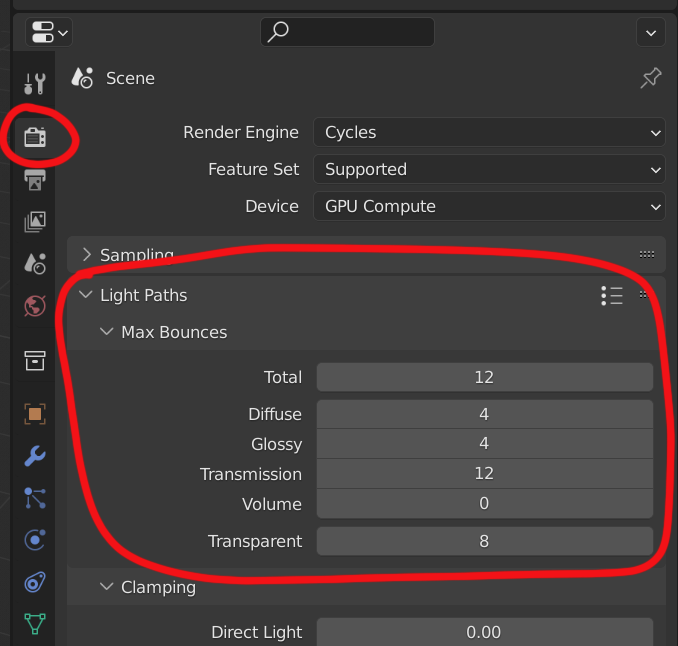No matter what I do, when I render this glass in cycles it looks really wrong. I did a cylinder with solidify modifier so nothing fancy.
 What I tried so far was playing with the IOR values, it looks somewhat better at 1.1
I also changed the Transmission and Glossy to 15 and it didnt do much.
I use two suns for lightning. Followed many glass tutorials but they all look good compared to mine. I also tried instead of using the Glass BSDF to use Principled BSDF with increased transmission but that doesnt really look so good.
What I tried so far was playing with the IOR values, it looks somewhat better at 1.1
I also changed the Transmission and Glossy to 15 and it didnt do much.
I use two suns for lightning. Followed many glass tutorials but they all look good compared to mine. I also tried instead of using the Glass BSDF to use Principled BSDF with increased transmission but that doesnt really look so good.
-
$\begingroup$ Check the last gif in this answer, you probably need a supporting loop on top and bottom - blender.stackexchange.com/a/229885/110840 $\endgroup$– Allen SimpsonCommented Jan 15, 2022 at 19:03
1 Answer
This can be caused by the phenomenon of total internal reflection, which causes some rays to reflect internally too many times to make it out of the glass. That is, certain light paths effectively get “trapped” inside the glass, never making it to the camera and resulting in black spots in the rendered result.
However, although total internal reflection is a real, physical phenomenon, such extreme, pure-black patches are not. Although internal reflections may result in the light bouncing around inside the glass a great many times, each bounce does not result in a significant decrease in energy, since glass itself does not absorb much energy: it mostly reflects it or passes it through. In fact, your example uses a plain Glass BSDF with a Roughness of 0.0, which is a highly idealized model of glass that absorbs no energy at all.
So, physically speaking, the light must emerge from the glass eventually, it just might take an arbitrarily high number of bounces before it manages to do so. The problem is that Cycles—unlike real physics—artificially terminates rays after a certain number of bounces, since simulating rays that bounce dozens of times is significantly more computationally expensive. The cutoff thresholds can be controlled in the Light Paths section of the Render Properties panel:
In the case of your Glass BSDF, all light bounces are either Glossy (i.e. a reflection) or Transmission (i.e. a refraction) bounces, so you can get Cycles to simulate more bounces by increasing both of those thresholds and the Total threshold (which is an upper bound on the total number of bounces of all types for a single ray). For example, here’s a comparison between two renders, one using the default Light Paths settings, and one where I’ve set the thresholds for Total, Glossy, and Transmission to 32:
You can experiment with different cutoff values for your particular scene and see what looks good. But be careful: don’t just blindly set the values extremely high, because setting them higher than you need will make your renders times worse!


